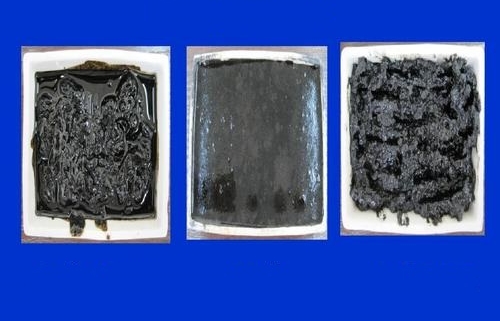|
Oil sludge industry and calorific value analysis |
||||
|
Oil sludge type |
Industry | Heat Value | ||
|
Vad |
Aad | FCad |
MJ/kg |
|
|
Refinery water treatment station sludge |
23.44% | 11.72% | 2.28% |
10.55 |
|
Oil field sludge |
23.68% | 38.65% | 2.06% |
7.97 |
|
Petrochemical plant tank bottom sludge |
51.96% | 10.42% | 3.31% |
25.55 |
| Liaohe mixed sludge | 66.61% | 3.77% | 4.49% |
31.48 |
It can be seen from the oil sludge industry and calorific value analysis in the above table that different types of oil sludge have different volatiles due to different composition and oil content, but the volatiles are relatively high. Liaohe mixed sludge is up to 66. More than %, the volatile matter is mainly the thermal decomposition products of hydrocarbon organic matter and non-hydrocarbon organic matter in oil sludge, the content of which mainly affects the distribution of pyrolysis products, and the oil sludge with high volatile matter content after pyrolysis The oil sludge with high rate and low volatile content has low gas-liquid yield after pyrolysis; the ash is mainly inorganic residue after incineration, which is derived from the slag phase in the oil sludge, mainly affecting the content of residue after heat treatment. The floor sludge is generally muddy soil contaminated by crude oil, so the ash content is relatively high: the calorific value of the oil sludge is related to its own oil content and oil quality. The above calorific value is the calorific value of the wet base sludge, except for the Liaohe mixed sludge heat. In addition to the larger value, the other three types of oil sludges have lower calorific value than the standard coal calorific value (29.3 MJ/kg) because of the relatively low water content. To be three types of oil sludge drying process accordingly.
|
Elemental analysis of oil sludge |
|||||
|
Oil sludge type |
N | C | H | S |
H/C |
|
Refinery water treatment station sludge |
1.44% | 16.21% | 2.68% | 1.09% |
1.98% |
|
Oil field sludge |
1.53% | 18.28% | 2.89% | 0.46% |
1.89% |
|
Petrochemical plant tank bottom sludge |
2.83% | 40.71% | 5.37% | 1.02% |
1.58% |
| Liaohe mixed sludge | 3.66% | 54.15% | 7.40% | 0.38% |
1.64% |
The element content in the analysis of oil sludge is the content of wet base sludge. The main components of organic elements are C, H, N, S, O. These elements are derived from the oil phase components in the sludge and the non-hydrocarbons in the slag phase. Organic matter, as can be seen from the above table, the content of elements in different types of sludge differs greatly, among which the content of C is the highest. The content of S and N mainly affects the choice of treatment methods. The sludge with high S and N content is not suitable for direct incineration: The H/C atomic ratio is an important parameter reflecting the chemical composition of the oil. The smaller the H/C atomic ratio, the more cyclic structures in the oil phase, and the more the chain structure, the more sludge and sludge in the water treatment station. The H/C atomic ratio is comparable to that of crude oil, while the H/C atomic ratio of the bottom sludge and the mixed sludge is relatively low, and the annular phase structure of the oil phase component is relatively large, which is equivalent to the atmospheric vacuum residue.



